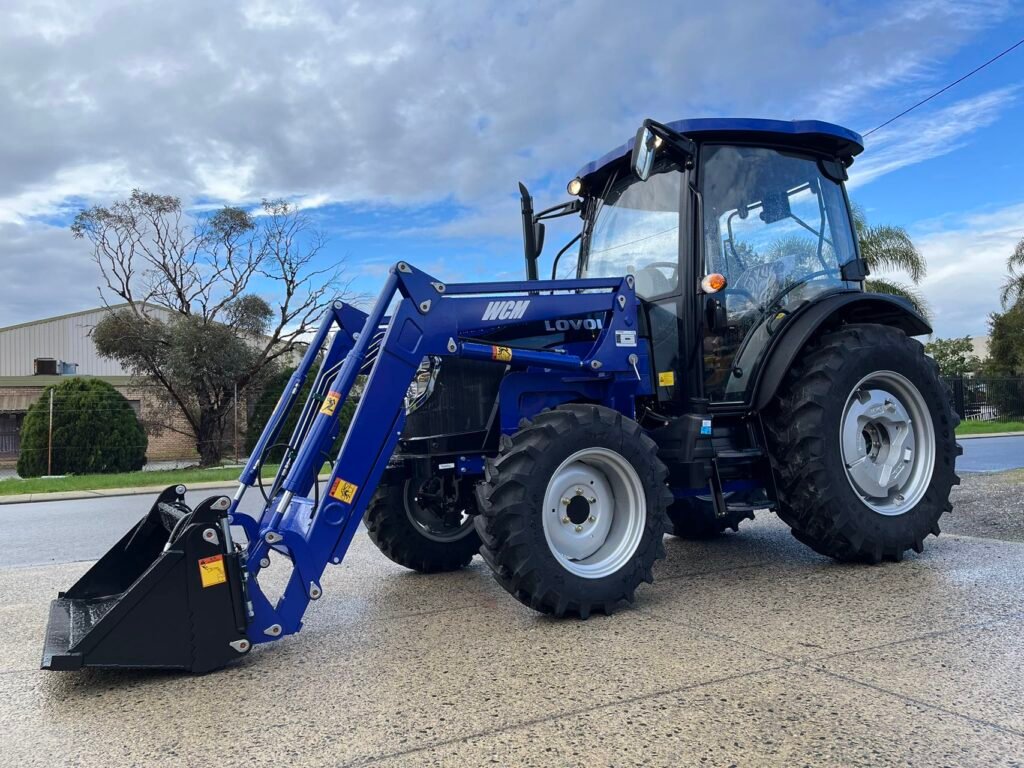
When browsing tractors for sale, most buyers focus on the upfront price tag. And it makes sense—a tractor is a big-ticket item, and whether you’re a farmer, contractor, or landowner, cost is usually the first thing on your mind. But here’s the catch: the purchase price is only part of the story.
The real expense of owning a tractor often comes from the hidden costs—those recurring, sometimes unexpected expenses that add up over time. If you’re not prepared for them, they can turn your “great deal” into a financial headache. The good news? With some smart planning, you can keep those costs in check and make your investment work harder for you.
Let’s dive into the hidden costs of tractor ownership and, more importantly, how to save money along the way.
1. Fuel and Operating Costs
It’s easy to underestimate how much fuel a tractor consumes, especially if you’re moving up from a smaller machine or renting in the past. Larger tractors, in particular, can burn through diesel quickly, and fuel prices are anything but predictable.
How to save:
- Match tractor size to your actual workload. Bigger isn’t always better if your tasks don’t require it.
- Keep up with regular engine maintenance—clean filters and tuned engines burn fuel more efficiently.
- Plan jobs strategically to reduce idle time, which wastes fuel without adding productivity.
2. Maintenance and Repairs
Every tractor, whether new or used, will require maintenance. Oil changes, hydraulic fluid checks, tire replacements, and general wear-and-tear repairs are inevitable. And when you factor in the cost of replacement parts, those bills can add up quickly.
How to save:
- Buy from a reputable dealer offering well-maintained tractors for sale with a clear service history.
- Stick to a preventive maintenance schedule instead of waiting for breakdowns. Preventive care almost always costs less than emergency repairs.
- Learn to handle simple tasks yourself—like changing filters or checking fluids—to cut down on service labor costs.
3. Tires and Tracks
Tires and tracks are one of the most expensive components to replace. A set of tractor tires can cost thousands of dollars, and they wear down faster if you’re working on rough terrain or asphalt.
How to save:
- Choose the right tire type for your work (agricultural tires for fields, industrial tires for hard surfaces).
- Rotate tires regularly to ensure even wear.
- Store your tractor properly when not in use to prevent unnecessary weather damage to tires.
4. Insurance and Registration
Depending on where you’re located, you may need insurance or registration for your tractor, especially if you’re operating it on public roads. These costs vary but can be significant if not factored into your budget.
How to save:
- Compare insurance providers—rates can differ widely.
- Bundle tractor insurance with your farm or business policies for discounts.
- Keep your tractor secure to avoid theft claims and keep premiums lower.
5. Attachments and Implements
A tractor’s true value lies in its versatility. But that versatility comes at a cost—attachments like loaders, plows, mowers, and augers don’t come cheap. While they expand your machine’s usefulness, they can quietly inflate your overall investment.
How to save:
- Prioritize attachments based on your most frequent tasks instead of buying everything at once.
- Look for quality used implements from trusted dealers alongside tractors for sale.
- Consider multi-purpose attachments that can handle more than one task.
6. Depreciation
Like most heavy equipment, tractors lose value over time. While depreciation isn’t an immediate “out-of-pocket” cost, it affects your long-term return on investment, especially if you plan to upgrade later.
How to save:
- Keep up with regular maintenance—tractors with a strong service record hold value better.
- Stick to trusted brands with strong resale demand.
- Buy used tractors that have already gone through the steepest depreciation curve.
7. Downtime Costs
This is one expense many owners don’t consider. When your tractor breaks down unexpectedly, you’re not just paying for repairs—you’re also losing productivity. That downtime can mean delayed projects, wasted labor, and lost income.
How to save:
- Choose a tractor model with reliable parts availability and local service support.
- Keep a maintenance log to spot issues before they become critical.
- Consider having backup equipment access through a dealer rental program.
Final Thoughts
When shopping for tractors for sale, it’s important to look beyond the initial price tag. The real cost of ownership includes fuel, maintenance, tires, insurance, attachments, and even downtime. The more prepared you are, the less likely these expenses will catch you off guard.
But don’t let hidden costs scare you away. A well-chosen tractor is one of the most valuable tools you can own—boosting productivity, saving time, and opening new opportunities. By planning ahead and making smart choices, you can keep costs manageable and maximize the return on your investment.